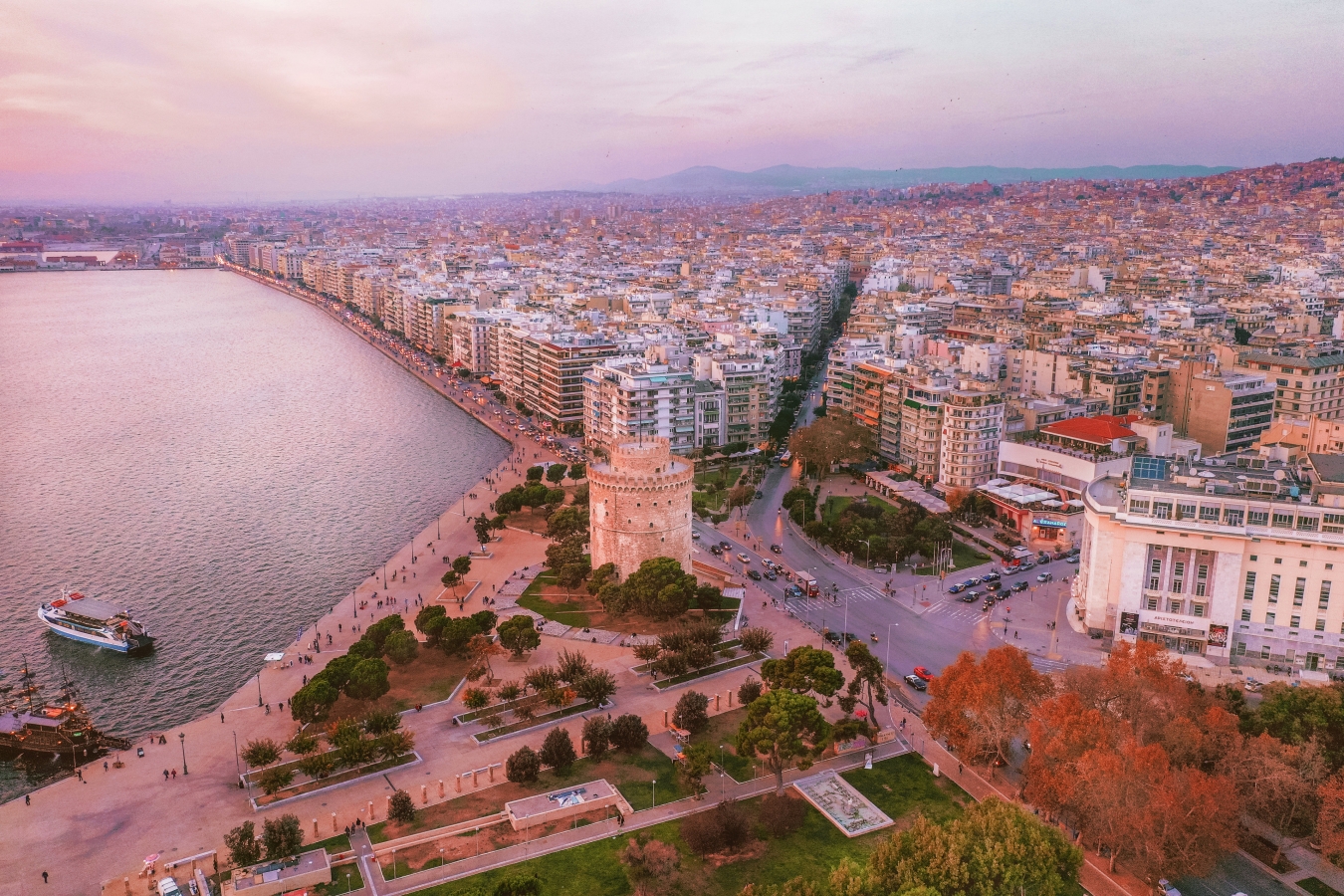19 things you need to know about Thessaloniki before your visit

If you're visiting Thessaloniki and want to get a glimpse of what Thessaloniki is all about, we've put together a list of 19 important things to know about the city.
- Thessaloniki is the second largest city in Greece and the capital of the administrative district of Central Macedonia.
- Thessaloniki is bordered by Thermaikos Gulf, which is the largest of the Aegean Sea.
- Thessaloniki has its own airport, "Macedonia Airport" and its own port, which is the second largest commercial port in Greece.
- There are 3 major universities in Thessaloniki: The Aristotle University of Thessaloniki, the University of Macedonia and the International Hellenic University, creating for the city a large academic reserve.
- Thessaloniki is very closely linked to its patron saint and protector, Saint Demetrios, whom it honours every year on 26 October.
- Thessaloniki is also called by many the "Nymph of Thermaikos".
- Thessaloniki has been inhabited since prehistoric times, while preserved findings date back to the 6th-5th millennium.
- Cassander, husband of Alexander the Great's sister, founded it in 316-315 BC and named it after his beloved wife: Thessaloniki. ( She became the mermaid who searches for him in all seas and asks the sailors: Does King Alexander live?). This new city quickly developed into a commercial center and naval base for the kingdom.
- Thessaloniki during the period of the Roman Empire grew even more. Thessaloniki became the capital of the second Roman administrative region of Macedonia. The Romans constructed the Egnatia Odos, which became a hub connecting Asia Minor, the Adriatic and the Hellespont.
- Thessaloniki in the Byzantine period was at its peak. "The first after the first" (i.e. Constantinople), Symvasileuousa (=the city that rules the empire together with Constantinople) as it used to be called, had created the ideal environment for the flourishing of letters, arts and commerce. The intellectual conditions of the time were ideal for the activity of the two brothers from Thessaloniki, Cyril and Methodius, who created the Slavic alphabet and christianized the Slavs.
- In 1430 Murat II besieged Thessaloniki and the city remained under Ottoman occupation until its liberation in 1912.
- Ιn 1917 a great fire breaks out in the city and destroys much of the city, leaving 73,000 people homeless and unemployed.
- In 1922 and 1923 Thessaloniki received two large waves of population from the Asia Minor catastrophe and the Greek-Turkish population exchange, but in the following decades they managed to give the city a new dynamic.
- Thessaloniki became a pole of attraction and residence for many cultures throughout the centuries. In the past, the coexistence of Greeks, Ottomans and Jews gave the city a multicultural character, elements of which we can still be found today.
- Due to its rich historical past, Thessaloniki has 15 monuments that are protected and inscribed on the Unesco World Heritage List.
- The traditional neighbourhoods of the city, Ladadika and Ano Ladadika are still today some of the most famous areas for their nightlife.
- Thessaloniki has also been awarded the title of Gastronomic Capital by Unesco, joining the Network of Creative Cities of Gastronomy.
- Thessaloniki is the hometown of koulouri, mpougatsa and "trigona panoramatos".
- Until today there are traditional open-air and closed (spepasti) markets in Thessaloniki.

